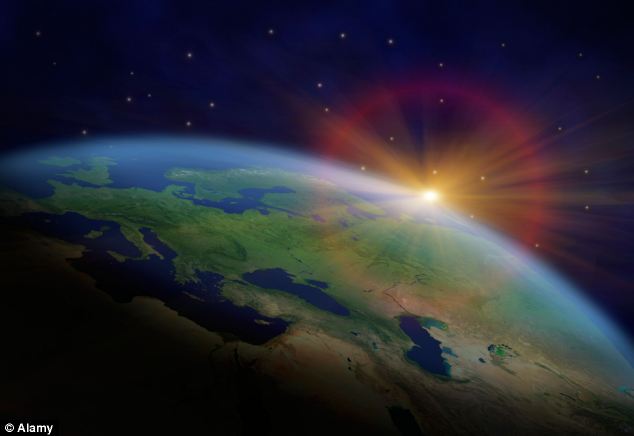What explains why so many individuals are drawn to major productions such as these? Surely, there are many factors, which vary across events and people. One often overlooked explanation is the emotion of awe.
Psychologists refer to awe as an intense emotional experience that overwhelms individuals with a sense of vastness or greatness. It often transforms individuals' sense of what is possible.
Although they can be laced with fear, and thus may evoke an avoidance reaction, experiences of awe invariably also fascinate. People often seek awe experiences, and remember them vividly and powerfully. In fact, an emerging body of psychological research reveals that awe encourages a sense of personal well-being and promotes various prosocial acts.
Historically, the most significant sources of awe have come from religion and nature. However, other people also have the potential to inspire us with their skill in various domains. Furthermore, as technology has become more powerful, new sources of awe have become available, blending virtual reality with human ingenuity.
It is potentially enlightening to recognize how much the emotion of awe is involved with mass media sensations.
For instance, consider the most watched television events of all-time. Globally, these include the first moon walk, the first live satellite broadcast (Elvis Presley in Hawaii), World Cup events, and the Olympics. In the United States, almost all of the most viewed television shows are Super Bowls. The top grossing films of all-time follow a similar pattern. At the top of the list are Avatar, Titantic, Star Wars, and Jurassic Park.
Intentionally or not, most of these productions stimulate awe. They do this in a few ways. First, and most importantly, they focus on elements of vastness or greatness in their programming in ways that transcend normal conceptions of the possible. For games such as the Super Bowl, for example, the skills of the athletes, particularly under pressure, can generate astonishment and admiration. Second, they often have supplemental features that "build up" the experience. Again, for the Super Bowl, these include an introduction, half-time show, and post-game production that intends to amaze spectators. Sometimes, particularly mesmerizing commercials can make for "jaw-dropping" moments that surpass even the game.
In some ways, media allows for "equal opportunity" in awe. That is, although most people won't have the resources to physically attend major awe-eliciting events like those mentioned, typically due to location or cost, almost everyone can view them on television. Moreover, technology can be used to enhance awe, such as when the sound and size of a movie theater's showing provides for an experience that most people can afford, but that is difficult to replicate in the home. Similarly, an article in the New York Times reported a few years ago that the most often e-mailed news articles were those that inspired awe.
Some of my fondest memories, particularly when I was younger, involved awe of significant media events. I remember watching the Super Bowl in awe, not only of the athletes, but of the event as a whole. I have vivid memories of being "blown away" viewing awe-inducing movies in the theater.
This suggests that awe may be used to sell.
There are potential downsides to seeking awe through mass media productions as well.
First, productions such as these can trick us to believe that we have experienced something more significant than we actually have. Although psychological research shows that awe can be induced, and significant positive effects found, from media productions of awe-inducing stimuli, surely these encounters are not as powerful as if they were experienced first-hand. Personally, I have never been to a World Cup, Olympics, or Super Bowl, but I imagine that being "there" would add other dimensions, such as sharing the experience with a crowd of so many other people.
Second, individuals can "replace" sources that traditionally have evoked awe, which may elicit more transformative and meaningful effects. Paraphrasing from Alain de Botton:
For thousands of years, it had been nature - and its supposed Creator - that had a monopoly on awe. It had been the icecaps, the deserts, the volcanoes, and the glaciers that had given us a sense of finitude and limitation and that had elicited a feeling in which fear and respect coagulated into a strangely pleasant feeling of humility... But then came a transformation to which we are still the heirs... We are now in the era of the technological sublime, when awe can most powerfully be invoked not by forests or icebergs but by technology. We are now almost exclusively amazed by ourselves.As we consume programs such as Super Bowl 50 and Star Wars, we might do well to recognize that some of the draw is because of awe. And, rather than pursuing awe only indirectly through the media and others' skills and technological wizardry, we also might do well to remember that there are ways for us to directly pursue experiences that connect us with sources that have inspired generations and generations before us.




Comment: For more, check out SOTT's Earth Changes videos. They're much better than Star Wars or the Super Bowl for inspiring awe - they're the real deal!
Check out: SOTT Earth Changes Summary - December 2015: Extreme Weather, Planetary Upheaval, Meteor Fireballs